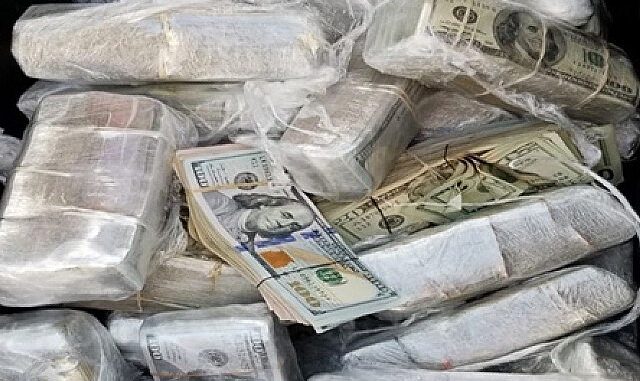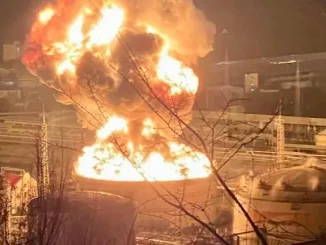
The U.S. Department of the Treasury is stepping up its efforts to identify the ways that drug cartels move their funds. Most recently, Treasury officials identified the presence of Chinese money laundering networks that are working with Mexican drug cartels and other criminal entities to move large sums of cash.
Published September 7, 2025
The U.S. Department of the Treasury is stepping up its efforts to identify the ways that drug cartels move their funds. Most recently, Treasury officials identified the presence of Chinese money laundering networks that are working with Mexican drug cartels and other criminal entities to move large sums of cash.
A Dual Warning from U.S. Authorities
The U.S. government rarely issues back-to-back public alerts on financial crime, but the past two weeks have underscored the seriousness of the threat.
On August 28, 2025, the Treasury Department delivered a pointed advisory to American banks, cautioning that Mexican cartels were increasingly turning to Chinese money laundering networks to disguise their drug profits. The message was clear: financial institutions must step up their vigilance against a new and highly adaptive laundering pipeline that blends organized crime with underground banking.
Then, on September 6, 2025, a follow-up report from the Financial Crimes Enforcement Network (FinCEN) added sharp detail. After reviewing more than 137,000 Bank Secrecy Act reports filed between 2020 and 2024, FinCEN flagged $312 billion in suspicious transactions connected to these Chinese laundering operations. Unlike older methods that relied heavily on bulk cash smuggling across the border, the new model uses structured bank deposits and low-profile intermediaries to quietly move billions.
The dual warnings carry two important implications. First, they reflect the scale of the threat: this is not a marginal issue, but a multibillion-dollar pipeline directly tied to the narcotics fueling America’s fentanyl crisis. Second, they highlight the evolution of cartel operations: Mexican syndicates are outsourcing their laundering to Chinese networks, who bring global reach, financial expertise, and access to underground demand for U.S. dollars inside China.
Taken together, the two warnings serve as a wake-up call. They show that cartels are no longer operating in isolation—they are now plugged into a global financial web that makes them harder to track, harder to dismantle, and more profitable than ever.
How the Scheme Works
At the core of this criminal partnership is a sophisticated but efficient currency exchange system that exploits weaknesses in both U.S. banking oversight and China’s strict capital controls.
-
Cartel Cash Flow
Mexican cartels generate billions of dollars in cash from narcotics sales across the United States. Traditionally, they relied on bulk cash smuggling—physically moving stacks of dollars across the border. That method, however, has become increasingly risky due to heightened border surveillance and anti-smuggling measures. -
Enter the Chinese Money Brokers
To bypass these risks, cartels turn to Chinese underground bankers operating in the U.S. and abroad. These brokers buy cartel dollars at a discount, providing the cartels with quick access to pesos or other assets they need to keep operations running. -
Circumventing China’s Capital Controls
In China, individuals and businesses face strict limits on how much money they can legally move out of the country—typically capped at $50,000 per year. But demand for U.S. dollars is high, especially among wealthy Chinese seeking to invest abroad, pay tuition, or purchase property.-
This demand creates the perfect market for cartel cash.
-
Brokers sell the dollars they bought from the cartels to Chinese clients desperate to skirt the rules.
-
-
Layering Through Small Deposits
To integrate this money into the legitimate financial system, brokers often recruit low-profile intermediaries—students, retirees, homemakers, or low-wage workers. These individuals make a series of small, structured deposits that fly under the radar of traditional anti-money laundering (AML) alerts. By dispersing large sums into many smaller transactions, the funds are “layered” and become harder to trace back to cartels. -
Integration and Payout
Once the funds are laundered, cartels receive their cut—often in pesos or in assets they can use directly in Mexico. The Chinese clients, meanwhile, receive access to U.S. dollars that would have been otherwise locked behind Beijing’s capital restrictions. Both sides profit, and the cycle repeats.
This scheme is attractive for one simple reason: everyone involved gets what they want. Cartels offload mountains of cash without having to move it physically, Chinese brokers pocket hefty fees, and Chinese nationals gain access to restricted foreign currency. The losers, however, are U.S. regulators, law enforcement, and the American public—who face the fallout in the form of stronger cartels, deadlier drugs, and billions in untraceable financial flows.
 Implications of the Cartel–China Money Laundering Connection
Implications of the Cartel–China Money Laundering Connection
1. National Security Threat
-
The fusion of narco-financing and global underground banking represents not just organized crime, but a geopolitical vulnerability.
-
Chinese networks circumvent U.S. oversight while strengthening cartels’ ability to keep flooding the U.S. with fentanyl, cocaine, and meth.
-
This could weaken U.S. border security efforts, as criminals no longer rely solely on bulk cash smuggling.
2. Financial System Risks
-
With $312 billion in suspicious transactions flagged, even major U.S. banks could unknowingly process laundered cartel funds.
-
It increases the compliance burden on financial institutions — they must enhance monitoring of small but unusual deposits, especially from low-income individuals with no clear source of funds.
-
If left unchecked, this could erode public trust in banks and invite stricter federal regulations.
3. China’s Shadow Role
-
While not officially state-backed, Chinese underground bankers exploit capital controls in China, creating a profitable loophole that cartels exploit.
-
Beijing could face diplomatic pressure — U.S. lawmakers may frame this as another example of China turning a blind eye to international crime that damages America.
-
This could intensify U.S.–China tensions, adding to disputes over trade, technology, and security.
4. Cartel Empowerment
-
Reliable money laundering pipelines allow cartels to reinvest in trafficking operations — buying weapons, bribing officials, and expanding networks.
-
With billions moving freely, cartels gain greater resilience against law enforcement crackdowns.
-
This makes them harder to dismantle and increases violence in Mexico and along the U.S. border.
5. Law Enforcement Challenges
-
The use of ordinary community members (students, retirees, homemakers) to make structured deposits makes detection harder.
-
Investigators must now expand beyond traditional cartel monitoring to track low-profile financial actors with seemingly clean backgrounds.
-
This strains resources for the DEA, FBI, and FinCEN, requiring new tech and deeper international cooperation.
6. Policy & Political Fallout
-
Expect new sanctions and regulations on Chinese financial intermediaries.
-
U.S. Congress could push for greater scrutiny on U.S.–China banking ties, possibly affecting trade negotiations.
-
On the political front, the cartel–China nexus is a powerful talking point for leaders pushing for stricter border security and tough-on-China policies.
 Overall Takeaway:
Overall Takeaway:
The revelations from the Treasury and FinCEN paint a troubling picture: Mexican cartels and Chinese money laundering networks are no longer just parallel threats but increasingly interdependent partners. Together, they are moving billions of dollars, sustaining the flow of deadly narcotics, and exploiting cracks in the global financial system.
For the United States, this isn’t simply a law enforcement challenge. It’s a national security issue that links border security, international finance, and U.S.–China relations into a single arena. The more these networks refine their tactics—using everyday individuals, underground banking systems, and global loopholes—the harder it becomes for authorities to keep pace.
The stakes are clear: unless the U.S. develops sharper tools to disrupt both sides of this illicit partnership, cartels will continue to profit, Chinese networks will thrive in the shadows, and Americans will bear the cost in overdoses, financial instability, and heightened geopolitical tension. What is unfolding now is not just a battle against drug money—it’s a test of America’s ability to defend its borders, its banking system, and its sovereignty in a world where crime and geopolitics increasingly converge.
SOURCES: BREITBART – Fentanyl Financiers: Treasury Links Mexican Banks and Chinese Networks to Cartel Money Laundering
BLOOMBERG – Treasury Warns Banks About China-Mexico Money Laundering Risks





Be the first to comment